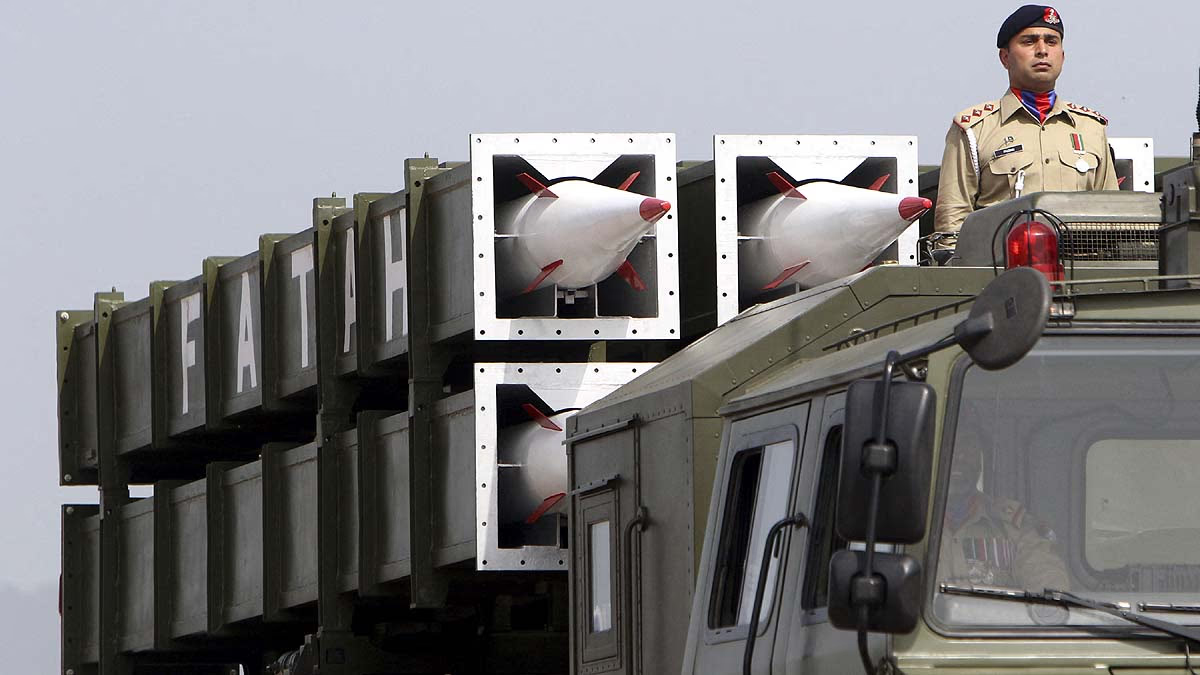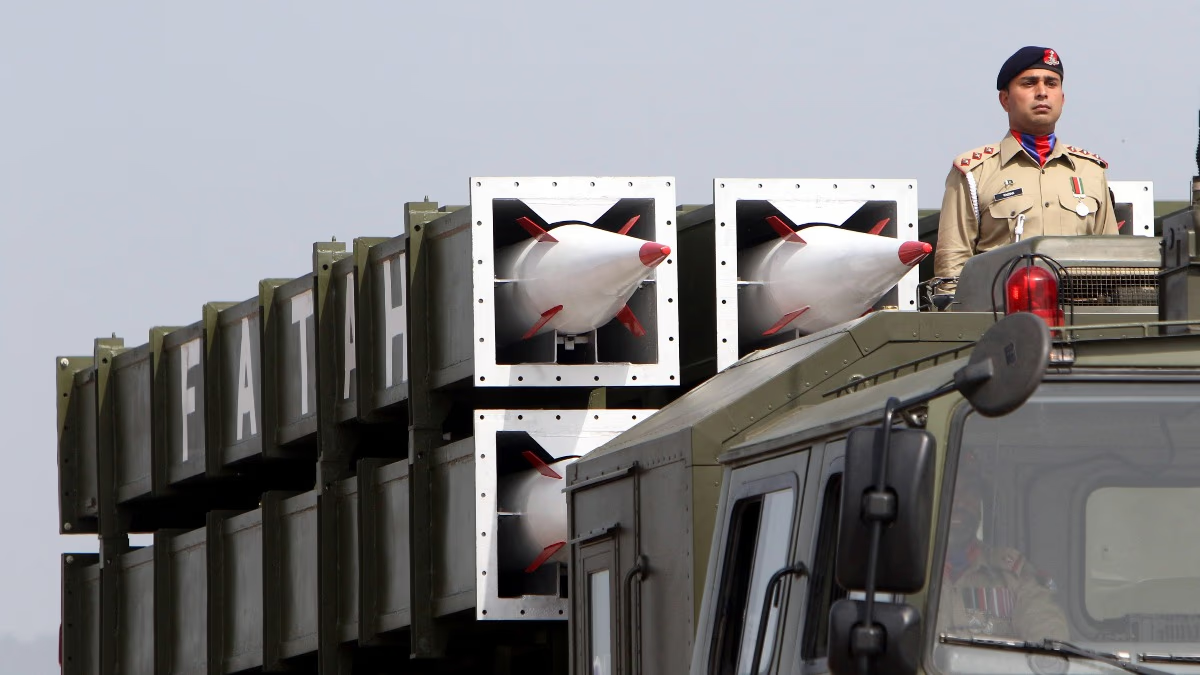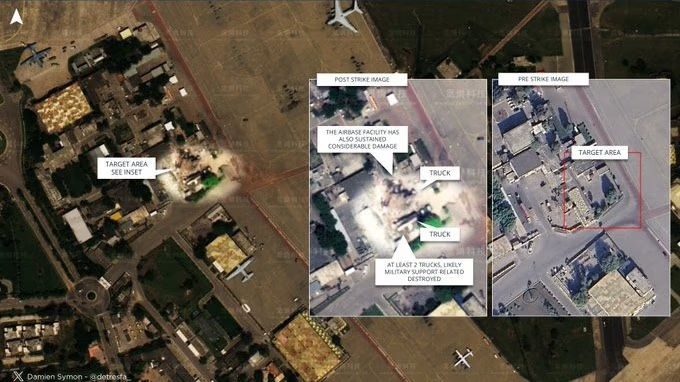In a bold yet unsuccessful move, Pakistan aimed its Fateh-1 precision-guided missile at military bases in India's western region. This strike came in response to Operation Sindoor, conducted by India on May 7, targeting nine terrorist bases in Pakistan and Pakistan-Occupied Kashmir (PoK).
India's air defense systems, especially the S-400 Triumph, integrated Counter-Unmanned Aerial System (UAS) grid, and Akash missile system, intercepted and neutralized the Fateh-1 missile mid-air.
Incident Details
On May 7, 2025, under Operation Sindoor-1, India destroyed nine terror hubs belonging to groups like Jaish-e-Mohammed and Lashkar-e-Taiba. This operation was in retaliation for a terrorist attack in Pahalgam on April 22, 2025, which claimed 26 lives.
In retaliation, Pakistan attempted drone and missile strikes on 15 Indian cities overnight on May 7-8. However, Indian air defenses thwarted these attempts.
On May 9, Pakistan utilized its Fateh-1 missile to target military bases in Rajasthan and Punjab, India. Nonetheless, Indian air defense systems successfully destroyed the missile mid-air, preventing any damage.
Fateh-1 Missile: Features and Capabilities
The Fateh-1 is a domestically developed, precision-guided, short-range ballistic missile (SRBM) by Pakistan. First tested in 2021, it's designed to bolster Pakistan Army's surface-to-surface attack capabilities.

Source: aajtak
Specifications
Range: 250-300 kilometers
Payload: 500 kg (conventional or high-explosive warhead)
Guidance: Inertial Navigation System (INS) and GPS-based navigation for high accuracy
Target: Military bases, infrastructures, and strategic facilities
Launch Platform: Mobile launcher offering mobility and surprising strike capability
Application:
Pakistan deployed the Fateh-1 as part of its strategic weapon system against India, designed for precision strikes, especially in border regions. The attempt to target Indian military bases with this missile was effectively neutralized by India's defense systems.
Role of Indian Air Defense Systems
India’s multi-layered air defense systems played a crucial role in intercepting and destroying the Fateh-1 missile, including:
1. S-400 (Sudershan Chakra)
The Russian-made S-400 ranks among the world's most sophisticated long-range surface-to-air missile systems. India acquired five squadrons for $5.43 billion in 2018.
Range: 400 km (intercept), 600 km (tracking)
Target: Ballistic missiles, fighter jets, drones, cruise missiles
Capability: Can simultaneously track and destroy 36 targets out of 300 tracked.
Contribution: Deployed in Pathankot and Rajasthan, effectively downing the Fateh-1 missile.
2. Integrated Counter-UAS Grid
An advanced network designed to neutralize drone and missile threats.
Tech: Radar, RF sensors, optical cameras, signal jamming
Capacity: Can track and destroy multiple threats over 1,800 km airspace
Contribution: Neutralized drone swarms accompanying Fateh-1, reducing missile impact.
3. Akash Missile System
Developed by DRDO, Akash is an indigenous medium-range surface-to-air missile.
Range: 45-70 km (Akash-NG)
Target: Fighter jets, drones, cruise missiles
Capability: 100% interception rate, with electronic counter-countermeasures (ECCM)
Contribution: Deployed in Punjab and J&K to aid in the destruction of Fateh-1 along with other missiles.
4. DRDO's Anti-Drone Techniques
The D4 Counter-Drone System and Man Portable Counters Drone System (MPCDS) neutralized aerial threats.
D4: Real-time tracking, soft/hard kill methods.
MPCDS: Jamming and incapacitation capabilities, deployed in 2024.
Contribution: Nullified DJI military drones accompanying Fateh-1.
Indian Counter-Strike
In a swift response to Pakistan's assault, Indian armed forces destroyed Pakistan's HQ-9 air defense system in Lahore on May 8 using Israel-made HARPY kamikaze drones. The Indian Defense Ministry affirmed that this reprisal was in the “same domain and intensity.”
The Indian military ensured zero civilian casualties during these operations. Defense Minister Rajnath Singh, in an all-party briefing, stated that Operation Sindoor is “ongoing” and any Pakistani aggression will meet with an equivalent response.
Strategic and Psychological Impact
Effectiveness of Indian Air Defense:
The interception of Fateh-1 by S-400, Akash, and Counter-UAS grid showcases India's advanced defense capabilities and technological prowess.
Failure of Pakistani Strategy:
Fateh-1's failure highlights limitations in Pakistan's missile technology, raising questions about reliance on Chinese and indigenous tech.
Psychological Influence:
The success of this interception elevated Indian military morale while dampening confidence in the Pakistani military.




